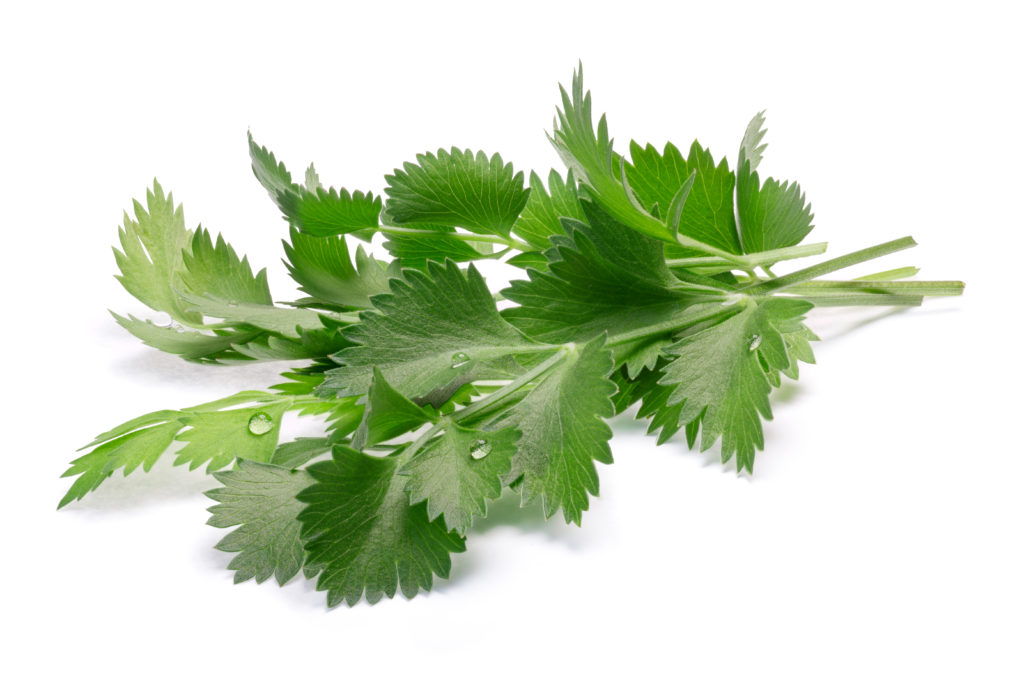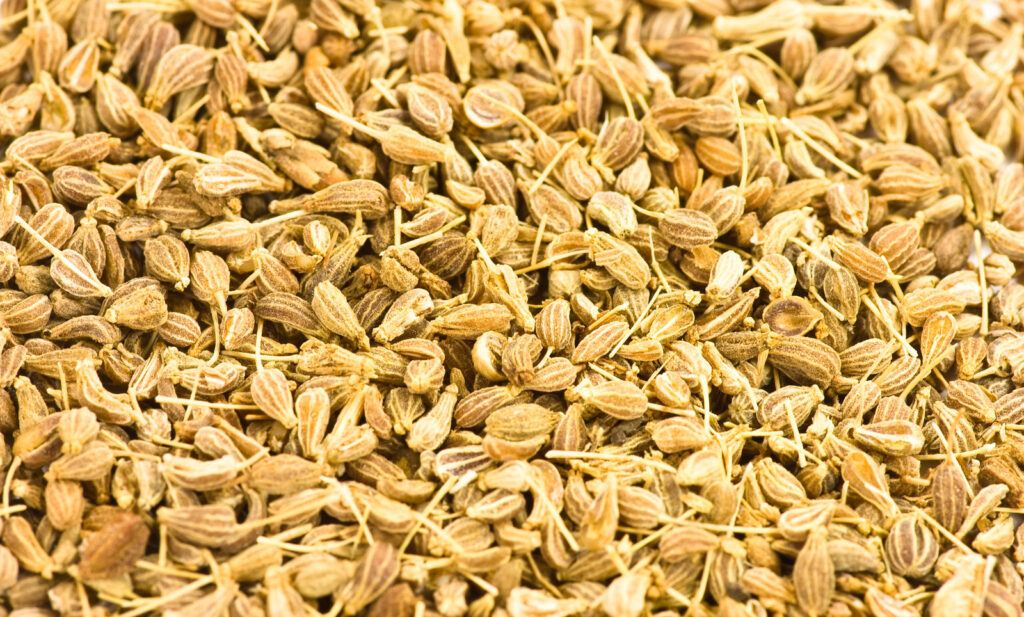Anise is a small herb with lacy leaves. It’s a member of the parsley family. Its leaves and seed have a sweet, licorice-like flavor. Both leaves and seeds can be used to flavor soups, salads, and sausage. They are used in bread, cookies, and candy.
Here is your complete guide to growing anise.
Where to plant anise
- Best location: Grow anise in full sun. Plant anise in a sheltered location out of the wind.
- Soil preparation: Anise grows best in well-drained soil rich in organic matter; however, anise will grow in poor soil. Anise prefers a soil pH of 6.0 to 6.7. Anise tolerates dry conditions but will not tolerate very wet soil.

When to plant anise
- Seed starting indoors: Start anise from seed indoors in late winter about 8 weeks before transplanting seedlings outdoors. Sow seeds in biodegradable pots that can be set out in the garden after the last frost in spring. Keep seeds at 70°F for optimal germination. Anise forms a tap root which does not like transplanting or moving.
- Transplanting to the garden: Because anise has a tap root it does not transplant well after the roots become established. Set seedlings in the garden in spring as soon as the soil can be worked; protect young plants with floating row covers or a plastic tunnel until after the last frost.
- Outdoor planting time: Sow anise in the garden as early as two weeks before the average last frost date in spring. Anise requires a long, frost-free growing season of about 120 days.
How to plant anise
- Planting depth: Sow anise seeds ¼ inch; seed germinates in about 20 days.
- Spacing: Space plants 6 to 18 inches apart. When seedlings are 6 weeks old thin plants to 18 inches apart or more.
- How much to plant: Grow 6 anise plants for fresh leaves and cooking; grow 12 plants for seeds and preserving.
Anise companion planting
- Companion planting: Anise is said to encourage cilantro to germinate. The strong smell of anise is said to repel aphids and fleas. Avoid planting anise with carrots and radishes. Grow creeping thyme at the foot of anise.
Watering and feeding anise
- Watering: Water anise when the ground starts to dry out. Do not overwater anise.
- Feeding: Side dress plants with aged compost or organic all-purpose fertilizer at midseason.
Anise care and maintenance
- Care: Anise stems are weak. Stake plants that become leggy; also stake plants in windy gardens.
- Mulching: Keep planting beds free of weeds. Weeds compete for soil moisture and nutrients.
Container growing anise
- Container growing: Anise grows easily in containers. Select a container at least 8 inches deep and wide.
- Winter growing: Anise can be grown indoors in winter. Place plants in a bright window or under fluorescent lights.
Anise pests and diseases
- Pests: Anise has no serious pest problems. Anise oil is said to repel insects.
- Diseases: Anise has no serious disease problems.

How to harvest anise
- When to harvest: Snip anise leaves for fresh use as needed. Seeds require more than 100 frost-free days to reach harvest. Harvest seeds from late summer to early autumn starting about two to three weeks after flowering when seeds have turned brown and fall easily from the head.
- How to harvest leaves: Snip leaves for fresh use. Leaves can be dried on a screen in a cool, dry, dark, airy place.
- How to harvest seeds: Cut the flower stems and seed heads and hang the stalks upside down in a warm, dry, shady place. Place a paper bag around the seed heads so seeds fall into the bag. Thresh seeds when dry or pasteurize them in an oven at 100°F for 15 minutes. Complete the harvest before the first frost in fall.
Anise in the kitchen
- Flavor and aroma: Anise leaves and seeds have a rich licorice flavor.
- Leaves: Add chopped fresh leaves to salads and fruits or use as a garnish. Use whole, ground, or crushed leaves in baked goods, apple dishes, pickles curries, eggs, or soups.
- Seeds: Anise seeds add flavor to sweet rolls and gourmet bread; crushed seeds enhance the flavor of desserts and fresh fruit salads. Seeds intensify the sweetness in pastries, cakes, and cookies
- Culinary complements: Anise is complemented by cinnamon and bay.
Preserving and storing anise
- Drying: Dry anise seeds on trays of paper for several warm days outdoors. After drying, pasteurize the seeds in the oven at 100°F for 15 minutes.
- Storing: Store leaves and seeds in an airtight container.
Anise propagation
- Seed: Anise is grown from seed. Save some seeds for sowing the following spring.
Get to know anise
- Botanical name and family: Pimpinella anisum (Apiaceae—carrot family)
- Type of plant: Anise is a warm-season annual herb.
- Growing season: Spring and summer
- Growing zones: Anise grows best in Zones 4 to 11.
- Hardiness: Anise is frost tender; time the planting of anise so freezing weather is past when seeds germinate.
- Plant form and size: Anise is a low-spreading bright green bushy plant that grows 18 to 24 inches tall and almost as wide. It resembles Queen Anne’s lace or wild carrots. The first growth is a clump of leaves with rounded foliage followed by stalks with heart-shaped leaflets. Later elongated flowering stems bear narrow, feathery leaves.
- Flowers: Anise has small white to yellowish-white flowers in lacy umbrella-shaped clusters atop feathery 24-inch stems. Flowers appear about 4 months after planting.
- Bloom time: Anise flowers from early summer to midsummer.
- Leaves: The lower leaves are broad and lobed with toothed edges; the upper leaves are feathery, elongated, and divided into three sections.
- Seeds: Gray-green, oval seeds ripen in summer.
Also of interest:
Learn how to plant, grow, and harvest your favorite kitchen herbs. Click below for all you need to know about culinary herbs.
- Anise
- Anise Hyssop
- Arugula
- Basil
- Bay
- Bee Balm
- Borage
- Calendula
- Caraway
- Catnip
- Chamomile
- Chervil
- Chives
- Cilantro-Coriander
- Clary
- Costmary
- Cress
- Dill
- Fennel, Sweet
- Horseradish
- Hyssop
- Lavender
- Lemon Balm
- Lemon Verbena
- Lovage
- Marjoram
- Mint
- Nasturtium
- Oregano
- Parsley
- Perilla
- Rosemary
- Sage
- Salad Burnet
- Savory
- Scented Geranium
- Shiso
- Sorrel
- Stevia
- Sweet Cicely
- Tarragon
- Thyme
Related articles:
Best Herbs for Container Growing
Planning the Home Fruit Garden
Garden Planning Books at Amazon:
- Vegetable Garden Almanac & Planner
- Kitchen Garden Grower’s Guide Vegetable Encyclopedia
- Vegetable Garden Grower’s Guide
- Tomato Grower’s Answer Book















